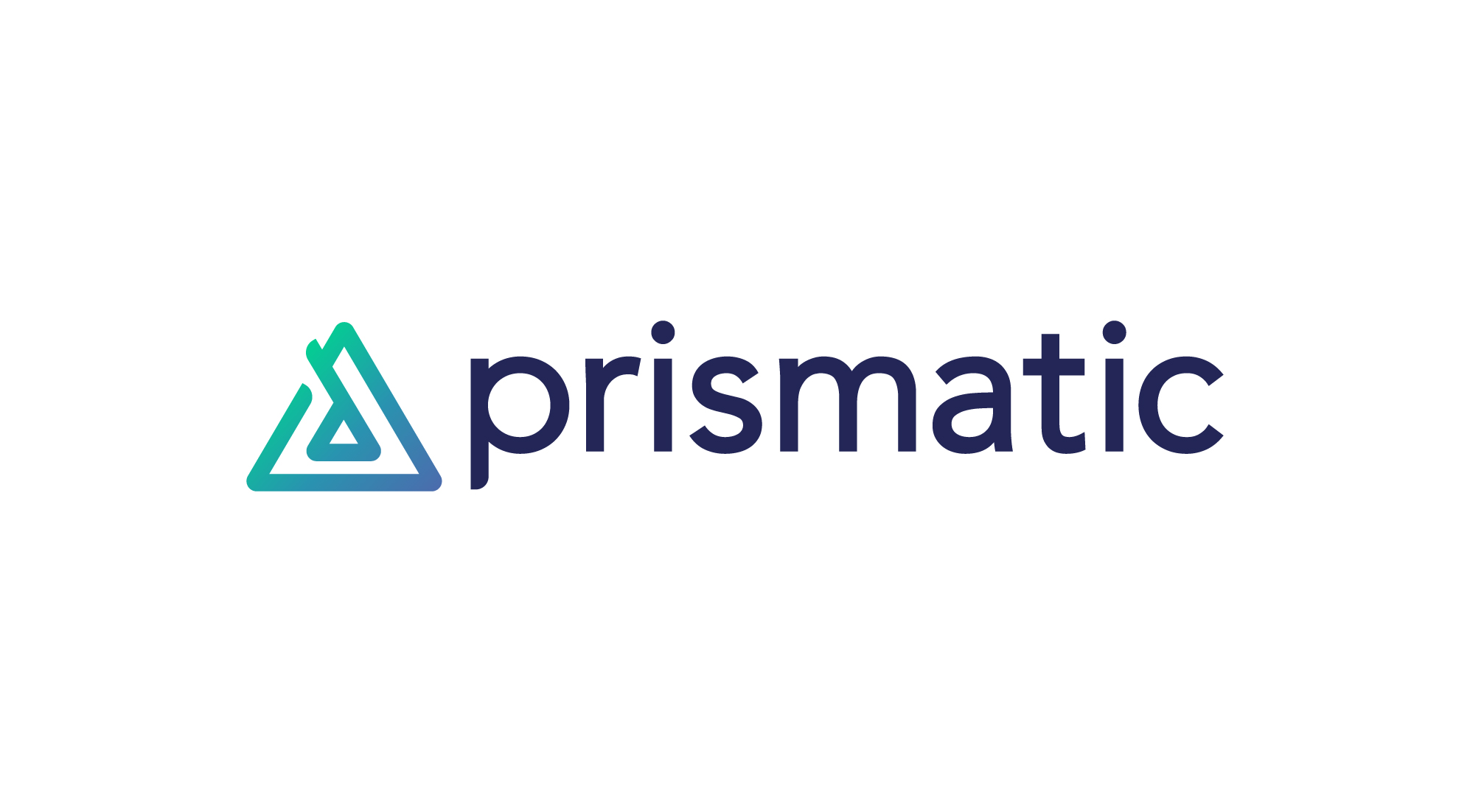Introduction
Software as a Service (SaaS) has revolutionized the way businesses operate by providing convenient and cost-effective solutions. In today’s fast-paced digital landscape, SaaS companies have become indispensable in enabling organizations to streamline their processes and boost productivity.
SaaS is a software delivery model where applications are hosted and accessed via the internet, eliminating the need for users to install and maintain software on their own systems. Instead, they can access the software through a web browser, making it highly accessible and user-friendly.
The rise of SaaS has presented numerous benefits for businesses of all sizes. By choosing a SaaS model, companies can enjoy the convenience of instant updates and upgrades, as well as scalable solutions to meet their evolving needs. Moreover, SaaS eliminates the upfront costs associated with purchasing and installing traditional software, making it an affordable option for startups and small businesses.
This article explores ten popular SaaS companies that have made a significant impact in various industries. From customer relationship management to collaboration tools, these companies offer innovative solutions designed to improve efficiency and drive business growth.
Definition of SaaS
SaaS, or Software as a Service, is a cloud computing model in which software applications are provided to users over the internet. Instead of purchasing and installing software on their own devices, users can access the software through a web browser, allowing them to use it from any location with internet connectivity.
The SaaS model offers several distinct advantages over traditional software delivery methods. One of the key benefits is the elimination of the need for users to handle software installation, configuration, and maintenance. The SaaS provider handles these tasks, allowing users to focus on using the software rather than technical complexities.
Moreover, SaaS applications are typically subscription-based, with users paying a recurring fee for access to the software. This subscription model offers more flexibility compared to traditional software licensing, as users can adjust their plans or cancel their subscriptions as needed, without the upfront investment often required with traditional software.
SaaS applications are hosted in the cloud, which means that users can access them using a web browser from any internet-connected device. This flexibility allows for easy collaboration and remote access, ideal for teams spread across different locations or for individuals working from home.
Furthermore, SaaS providers are responsible for software updates and security, ensuring that users have access to the latest features and that their data is protected. This relieves users of the burden of constantly updating and securing their software, a task that can be time-consuming and resource-intensive.
To summarize, SaaS is a cloud-based software delivery model that offers users convenient and flexible access to applications over the internet. It eliminates the need for software installation and maintenance, offers subscription-based pricing, allows for easy collaboration, and provides automatic updates and security.
Benefits of SaaS
Software as a Service (SaaS) offers numerous benefits for businesses of all sizes across various industries. Here are some key advantages of adopting the SaaS model:
- Cost-Effectiveness: SaaS eliminates the need for upfront investment in software licenses and infrastructure. Instead, businesses can opt for flexible subscription-based pricing models, paying only for the features and number of users they need. This cost-effective approach is particularly beneficial for startups and small businesses with limited budgets.
- Scalability: SaaS applications can easily scale up or down to accommodate changing business needs. Companies can add or reduce users and upgrade or downgrade their subscription plans as necessary, without the hassle or cost associated with traditional software upgrades. This scalability is crucial for businesses experiencing rapid growth or seasonal fluctuations.
- Accessibility and Convenience: With SaaS, users can access their applications from anywhere with an internet connection. This convenient accessibility allows for remote work, collaboration among teams in different locations, and the ability to work on any device, including laptops, tablets, and smartphones. It enhances productivity and flexibility, enabling employees to work seamlessly wherever they are.
- Automatic Updates: SaaS providers handle software updates and upgrades, ensuring that users always have access to the latest features and security patches. Businesses no longer need to invest time and resources in maintaining and updating their software. This automatic update process saves valuable time and effort and ensures that users have the most up-to-date tools at their disposal.
- Improved Collaboration: SaaS applications often come with built-in collaboration features, allowing teams to work together efficiently, regardless of their physical location. Features like real-time document editing, instant messaging, and video conferencing foster seamless collaboration and enhance productivity. With SaaS, businesses can break down geographical barriers and enable effective teamwork.
- Flexibility and Customization: SaaS applications offer a high level of flexibility, allowing businesses to customize the software to fit their specific needs. Many SaaS providers offer a range of integrations and add-ons, allowing companies to extend the functionality of their applications. This flexibility ensures that businesses can tailor their software stack to align with their unique workflows and requirements.
- Focus on Core Competencies: By adopting SaaS, businesses can offload the responsibilities of software installation, maintenance, and security to the SaaS provider. This allows companies to focus their resources and energy on their core competencies and strategic initiatives, instead of dealing with technicalities. It empowers organizations to concentrate on driving innovation and growth without getting caught up in software management.
In summary, the benefits of SaaS include cost-effectiveness, scalability, accessibility, automatic updates, improved collaboration, flexibility, and the ability to focus on core competencies. These advantages make it an attractive option for businesses seeking efficient and streamlined software solutions.
Popular SaaS Companies
The SaaS industry is filled with innovative companies that offer a wide range of solutions to meet the growing needs of businesses across various sectors. Here are ten popular SaaS companies that have made a significant impact:
- Salesforce: Salesforce is a leading customer relationship management (CRM) SaaS provider. Its cloud-based platform offers a range of sales, marketing, and customer service tools to help businesses streamline their operations and enhance customer satisfaction.
- Microsoft Office 365: Microsoft Office 365 is a comprehensive suite of productivity tools offered as a SaaS solution. It includes popular applications like Word, Excel, PowerPoint, and Outlook, along with other collaboration and communication tools, all accessible through a web browser.
- Google Suite: Google Suite, now known as Google Workspace, is a popular SaaS solution that encompasses a suite of productivity applications including Gmail, Google Drive, Docs, Sheets, and more. It offers seamless collaboration and powerful cloud storage capabilities.
- Slack: Slack is a widely-used SaaS communication and collaboration platform that simplifies team communication. It provides instant messaging, file sharing, and integration with other productivity tools, offering a centralized hub for team collaboration.
- Zoom: Zoom has become synonymous with remote meetings and video conferencing. This SaaS platform offers high-quality audio and video conferencing capabilities, along with features like screen sharing and chat, enabling seamless communication and collaboration among remote teams.
- Dropbox: Dropbox is a cloud-based file storage and sharing platform known for its ease of use and reliability. It allows users to store, retrieve, and share files from any device, providing a secure and efficient way to collaborate on documents and projects.
- HubSpot: HubSpot is a comprehensive inbound marketing and sales platform offered as a SaaS solution. It provides tools for lead generation, customer relationship management, email marketing, social media management, and more, helping businesses attract, engage, and delight customers.
- Workday: Workday is a SaaS provider that specializes in cloud-based human capital management (HCM) and financial management solutions. It offers features for HR, talent management, payroll, and accounting, catering to the needs of modern businesses.
- Zendesk: Zendesk offers cloud-based customer service and support solutions. Its SaaS platform includes features for helpdesk ticketing, live chat, knowledge bases, and customer engagement, enabling businesses to provide exceptional customer experiences.
- Adobe Creative Cloud: Adobe Creative Cloud is a popular SaaS offering from Adobe that provides access to a wide range of creative software applications such as Photoshop, Illustrator, InDesign, and more. It caters to designers, photographers, videographers, and other creative professionals.
These are just a few examples of the many successful SaaS companies that have made their mark in the industry. Each of these companies offers unique solutions designed to enhance productivity, collaboration, and efficiency in today’s rapidly evolving digital business landscape.
Salesforce
Salesforce is a renowned SaaS company and a leader in cloud-based customer relationship management (CRM) solutions. Founded in 1999, Salesforce has revolutionized the way businesses manage their customer interactions, sales processes, and marketing efforts.
As a SaaS CRM platform, Salesforce provides businesses with a comprehensive set of tools and functionalities to effectively manage and nurture customer relationships. Its cloud-based nature allows for accessibility from anywhere, enabling sales teams to work seamlessly even when on the go.
Key features of Salesforce include:
- Lead and Opportunity Management: Salesforce offers a robust system for tracking and managing leads and opportunities. It allows sales teams to easily capture, track, and analyze leads, ensuring that they don’t miss out on potential sales opportunities.
- Sales Forecasting: Salesforce provides advanced features for sales forecasting, allowing businesses to make informed decisions about resource allocation and revenue projections. The platform offers real-time visibility into sales pipelines and performance metrics.
- Customer Management: Salesforce enables businesses to maintain a unified view of their customers, ensuring personalized interactions and delivering exceptional customer service. It provides a 360-degree customer view, allowing sales, service, and marketing teams to collaborate and provide a seamless customer experience.
- Marketing Automation: With Salesforce, businesses can create targeted marketing campaigns and automate various marketing tasks. It offers a range of tools for email marketing, lead nurturing, and campaign management, enabling businesses to engage with their prospects and customers effectively.
- Customization and Integration: Salesforce allows businesses to customize the platform to match their specific requirements. Additionally, it provides a vast marketplace of third-party integrations, enabling seamless integration with other business systems and applications.
Salesforce stands out for its scalability, flexibility, and extensive ecosystem of add-ons and integrations. It has made a significant impact in various industries, empowering businesses to optimize their sales processes, enhance customer satisfaction, and drive revenue growth.
With its commitment to innovation and customer success, Salesforce has become a trusted partner for countless organizations around the world. Its continuous updates and enhancements, combined with top-notch customer support, have solidified its position as a leading SaaS company in the CRM space.
Microsoft Office 365
Microsoft Office 365 is a highly popular and widely used suite of productivity tools offered as a SaaS solution. It includes a comprehensive set of applications and services that enable businesses to enhance collaboration, communication, and productivity.
Office 365 offers a range of familiar applications, including Word, Excel, PowerPoint, Outlook, and OneNote, all accessible through web browsers and mobile devices. This cloud-based approach allows users to access their files and tools from anywhere with an internet connection.
Key features of Microsoft Office 365 include:
- Collaboration Tools: Office 365 provides a suite of collaboration tools, such as SharePoint and Teams, enabling teams to work together seamlessly. These tools facilitate real-time document collaboration, file sharing, instant messaging, and video conferencing, fostering teamwork and improving productivity.
- Productivity Applications: With applications like Word, Excel, and PowerPoint, Office 365 offers powerful tools for creating and editing documents, spreadsheets, and presentations. These applications provide advanced features, templates, and integration capabilities, enhancing productivity and streamlining workflows.
- Email and Calendar Management: Office 365 includes Outlook, a robust email and calendar management application. It offers features such as email organization, scheduling, and task management, helping users stay organized and efficient in their daily work.
- Cloud Storage and File Sharing: OneDrive, Microsoft’s cloud storage service integrated with Office 365, allows users to store files securely in the cloud. It provides easy file sharing and synchronization, ensuring that files are easily accessible and always up to date.
- Security and Compliance: Microsoft has implemented robust security measures and compliance standards within Office 365, ensuring the protection and privacy of user data. It offers features such as data encryption, multi-factor authentication, and data loss prevention, giving businesses peace of mind.
With its extensive suite of applications, Office 365 has become a go-to solution for businesses of all sizes. It offers flexibility, scalability, and easy integration with other Microsoft services and applications.
Microsoft continues to innovate and enhance Office 365, introducing new features and updates regularly. Its dedication to user experience and customer satisfaction has solidified Office 365’s position as a leading SaaS offering in the productivity software space.
Google Workspace
Google Workspace, formerly known as Google Suite, is a popular SaaS solution that encompasses a suite of productivity applications offered by Google. It provides businesses with a range of tools and services to enhance collaboration, communication, and productivity.
Google Workspace offers a comprehensive set of applications, including Gmail, Google Drive, Docs, Sheets, Slides, and more. These applications are cloud-based, allowing users to access their files and work from anywhere, using any device with an internet connection.
Key features of Google Workspace include:
- Email and Communication: Google Workspace offers Gmail, a powerful email service that provides a professional and reliable email experience. It includes features such as advanced search, spam filtering, and customizable email addresses, enhancing productivity and communication within teams.
- Collaboration Tools: Google Drive, Docs, Sheets, and Slides enable seamless collaboration among team members. Multiple users can work on the same document simultaneously, and changes are saved automatically. The commenting and chat features further facilitate real-time collaboration and feedback.
- Cloud Storage: With Google Drive, users can store and access their files securely in the cloud. It provides ample storage space, making it easy to keep documents, images, and other files organized and accessible from any device.
- Calendar and Scheduling: Google Calendar allows users to schedule meetings, manage appointments, and share calendars with team members. It provides reminders, event notifications, and integration with other Google Workspace applications, keeping users organized and on top of their schedules.
- Security and Data Protection: Google Workspace has implemented robust security features to protect user data. It offers two-factor authentication, data encryption, and advanced spam filtering, ensuring the privacy and security of sensitive information.
Google Workspace is known for its simplicity, ease of use, and tight integration between its applications. It promotes productivity and collaboration by providing a unified platform where teams can work together effectively.
In addition to its core applications, Google Workspace also offers various add-ons and extensions from the Google Marketplace, allowing businesses to extend the functionality of their suite. These add-ons enhance capabilities and integrate with third-party apps to further streamline workflows and meet specific business needs.
With its cloud-based nature and focus on collaboration and productivity, Google Workspace has gained popularity among businesses of all sizes across different industries. It continues to evolve and introduce new features, making it a competitive and widely adopted SaaS solution in the productivity software market.
Slack
Slack is a SaaS communication and collaboration platform that has transformed the way teams communicate and work together. It provides a centralized hub where individuals and teams can collaborate, share files, and communicate in real time, reducing the reliance on email and enhancing productivity.
Slack enables teams to organize conversations into channels, making it easy to keep discussions focused and accessible to relevant team members. It offers features such as instant messaging, file sharing, and integration with other tools and services, allowing for seamless collaboration.
Key features of Slack include:
- Channels and Direct Messaging: Slack allows teams to create channels for specific projects, departments, or topics, providing a central space for discussions. It also enables direct messaging between individuals, facilitating quick and direct communication.
- File Sharing and Collaboration: Slack offers easy file sharing and collaboration features. Users can upload files, share documents, and collaborate on them in real time. Integration with services like Google Drive and Dropbox allows for seamless access to files stored in these platforms.
- App Integration: Slack offers a wide range of integrations with other business tools and services. This allows users to bring their favorite apps, such as project management tools, customer support platforms, and file storage services, directly into their Slack workspace, promoting productivity and streamlining workflows.
- Notifications and Search: Slack keeps users informed with customizable notifications. Users can set notification preferences, ensuring they stay updated on important conversations. Additionally, Slack’s powerful search functionality allows users to easily find past messages, files, and conversations, saving time and improving efficiency.
- Voice and Video Calls: Slack offers voice and video call capabilities, allowing teams to have real-time discussions and virtual meetings. This feature fosters effective communication, especially for remote teams or for those working across different time zones.
Slack has gained popularity due to its user-friendly interface, extensive integration capabilities, and focus on team collaboration. It has become a go-to platform for teams to streamline communication and enhance productivity, particularly in remote work environments.
With its growing app ecosystem and continuous innovation, Slack continues to evolve and add new features. It empowers teams to work together seamlessly, breaking down communication barriers and enabling effective collaboration in modern work environments.
Zoom
Zoom is a SaaS platform that has become synonymous with remote meetings and video conferencing. It offers a reliable and user-friendly solution for individuals and businesses to connect, collaborate, and communicate effectively, regardless of their geographical location.
Zoom provides a range of features that make virtual meetings and webinars seamless and engaging. It offers high-quality audio and video capabilities, along with interactive features like screen sharing, virtual backgrounds, and chat functionality.
Key features of Zoom include:
- Videoconferencing: Zoom enables face-to-face virtual meetings, allowing participants to see and interact with each other in real time. It supports multiple participants, making it suitable for both small and large group meetings.
- Screen Sharing: Zoom allows for easy screen sharing, making it simple to present slides, documents, or demonstrations during meetings. This feature enhances collaboration and ensures effective communication of ideas and information.
- Recording and Transcription: Zoom provides the option to record meetings, webinars, and presentations. It also offers automatic transcription capabilities, making it convenient to review discussions or capture important details shared during the session.
- Chat and Collaboration: Zoom’s chat feature allows participants to communicate through instant messaging during meetings, fostering real-time collaboration and interaction. Users can send messages, share files, and collaborate on projects within the Zoom platform.
- Virtual Backgrounds: Zoom offers the ability to set virtual backgrounds, allowing users to customize their video backgrounds. This feature provides a professional look and allows for privacy when working from home or in a public space.
Zoom has gained immense popularity, particularly in recent times, due to its user-friendly interface, reliable performance, and ease of use. It provides a convenient solution for teams to connect and collaborate remotely, empowering businesses to maintain productivity and effective communication in a virtual work environment.
In addition to traditional meetings, Zoom offers features for webinars, online training sessions, and virtual events, expanding its utility and catering to different needs. Its scalability, security measures, and cross-platform compatibility have made it a trusted choice for organizations around the world.
Zoom continues to innovate and enhance its features to meet the evolving needs of users. It remains at the forefront of the video conferencing market, constantly striving to provide an exceptional virtual meeting experience for individuals and businesses alike.
Dropbox
Dropbox is a widely-used cloud-based file storage and sharing platform that has revolutionized the way individuals and businesses store, access, and collaborate on their files. It offers a secure and convenient solution to manage and share files across different devices and platforms.
Dropbox allows users to store files in the cloud and access them from any device with an internet connection. It provides a seamless file synchronization experience, ensuring that files are up to date across all linked devices.
Key features of Dropbox include:
- File Storage and Organization: Dropbox provides ample storage space for users to store their files, documents, and media. It allows for easy organization of files into folders and subfolders, making it simple to navigate and find specific files when needed.
- File Sharing and Collaboration: Dropbox allows users to share files and collaborate with others. It offers flexible sharing options, allowing users to control access levels and permissions for specific files or folders. This promotes seamless collaboration and enhances productivity within teams.
- File Versioning and Recovery: Dropbox automatically saves versions of files, enabling users to retrieve earlier versions if needed. In case of accidental deletions or file corruption, Dropbox allows users to recover lost files, ensuring data integrity and minimizing the risk of data loss.
- Integration with Productivity Tools: Dropbox integrates with various productivity tools and applications, such as Microsoft Office and Google Workspace. This integration facilitates editing and collaboration on files directly within the Dropbox platform, streamlining workflows and saving time.
- Security and File Protection: Dropbox employs industry-standard security measures to protect user data. It ensures file encryption, secure transmission, and offers features like two-factor authentication to enhance the security of files stored in the cloud.
Dropbox’s user-friendly interface and intuitive file management features have made it a popular choice for individuals and businesses alike. Its cross-platform availability and seamless integration with other productivity tools make it convenient to access and collaborate on files from various devices and applications.
Dropbox offers several pricing plans, catering to different storage needs and user requirements. This scalability ensures that users can choose the plan that best fits their needs, whether it’s for personal file storage or for business collaboration.
As cloud-based file storage continues to be an essential component of modern workflows, Dropbox remains a trusted and reliable solution for individuals and businesses to store, share, and collaborate on files securely in the cloud.
HubSpot
HubSpot is a comprehensive inbound marketing and sales platform that operates as a SaaS solution. It offers a suite of tools designed to enable businesses to attract, engage, and delight customers by implementing effective marketing and sales strategies.
HubSpot provides a range of integrated features and functionalities that cover various aspects of marketing, sales, and customer relationship management. From lead generation and email marketing to social media management and customer support, HubSpot offers a comprehensive solution for businesses of all sizes.
Key features of HubSpot include:
- CRM and Marketing Automation: HubSpot’s CRM provides a centralized hub for managing contacts, leads, and customer interactions. It integrates seamlessly with the marketing automation tools, allowing businesses to create personalized marketing campaigns and track the entire customer journey.
- Email Marketing: HubSpot offers robust email marketing capabilities, allowing businesses to create and send targeted email campaigns. It provides features such as contact segmentation, email templates, and analytics, enabling businesses to engage with their audience effectively.
- Social Media Management: HubSpot allows businesses to manage their social media presence from a single platform. Users can schedule and publish social media posts, monitor engagement, and gain insights into social media performance, streamlining their social media marketing efforts.
- Content Management: HubSpot’s content management system (CMS) enables businesses to create and manage their websites, blogs, and landing pages. It offers a user-friendly interface, pre-built templates, and SEO optimization features, empowering businesses to create compelling digital experiences.
- Sales Tools: HubSpot’s sales tools provide features like contact management, email tracking, and meeting scheduling. These tools facilitate sales team collaboration and enable more personalized and meaningful interactions with prospects and customers.
- Customer Support and Service: HubSpot provides customer support and service features, including ticketing, live chat, and knowledge bases. These features enhance customer experience and help businesses deliver exceptional support and service to their customers.
HubSpot’s all-in-one platform, combined with its user-friendly interface and robust functionality, has made it a popular choice for businesses looking to streamline their marketing, sales, and customer service efforts. It allows for better alignment between marketing and sales teams, resulting in a more efficient and cohesive customer journey.
As HubSpot continues to enhance its platform with new features and integrations, it remains a top choice for businesses seeking an integrated SaaS solution to drive inbound marketing, nurture leads, and build strong customer relationships.
Workday
Workday is a SaaS provider specializing in cloud-based human capital management (HCM) and financial management solutions. It offers a comprehensive suite of applications that empower businesses to efficiently manage their HR processes, employee data, payroll, and financial operations.
Workday’s HCM suite covers a wide range of HR functions, including talent acquisition, performance management, compensation planning, and employee development. Its financial management solutions enable businesses to handle budgeting, accounting, and financial reporting tasks in a streamlined and integrated manner.
Key features of Workday include:
- Human Capital Management: Workday’s HCM suite offers features for talent acquisition, employee onboarding, performance management, and career development. It provides a unified and intuitive platform for managing employee data, simplifying HR processes, and enhancing the employee experience.
- Payroll and Benefits Management: Workday facilitates accurate and efficient payroll processing, ensuring compliance with regulations and allowing for easy management of employee benefits. It automates calculations, tax deductions, and withholdings, saving time and reducing errors.
- Financial Management: Workday’s financial management solutions streamline accounting processes, budgeting, and financial reporting. It offers real-time visibility into financial data, allowing businesses to make informed decisions and manage their resources effectively.
- Analytics and Reporting: Workday provides robust analytics and reporting capabilities, allowing businesses to gain insights from HR and financial data. Its reporting tools enable businesses to generate custom reports and visualizations, facilitating data-driven decision-making.
- Mobile and Self-Service: Workday offers mobile applications and self-service features, allowing employees and managers to access relevant HR and financial information anytime, anywhere. It provides a user-friendly interface and empowers employees to manage their own data and tasks.
Workday’s cloud-based architecture ensures that businesses have access to the latest updates and capabilities without the need for costly and time-consuming system upgrades. Its intuitive interface and user-friendly design make it easy for both HR professionals and employees to navigate and utilize the platform.
With its focus on scalable and integrated HCM and financial management solutions, Workday has become a trusted choice for businesses across industries. Its commitment to innovation and customer success has solidified its position as a leading SaaS provider in the HCM and financial management space.
Zendesk
Zendesk is a cloud-based customer service and support platform that operates as a SaaS solution. It offers a range of tools and features designed to help businesses deliver exceptional customer experiences, manage support tickets, and build strong customer relationships.
Zendesk provides a comprehensive suite of customer support solutions, including ticketing systems, live chat modules, self-service knowledge bases, and customer engagement tools. It enables businesses to efficiently handle customer inquiries, track support tickets, and enhance customer satisfaction.
Key features of Zendesk include:
- Ticketing System: Zendesk offers a ticketing system that allows businesses to manage customer inquiries and support requests efficiently. It enables support agents to track, prioritize, and respond to tickets, ensuring timely and effective resolution.
- Live Chat: Zendesk’s live chat module enables businesses to engage with customers in real time and provide instant support. It allows for personalized interactions, improving customer satisfaction and enabling quick issue resolution.
- Self-Service Knowledge Base: Zendesk’s knowledge base feature allows businesses to create and maintain a repository of articles and resources for self-service support. It provides customers with a searchable database of information, empowering them to find answers to their questions independently.
- Multichannel Support: Zendesk supports customer inquiries across various channels, including email, chat, social media, and phone. It allows businesses to provide consistent support experiences, regardless of the platform or channel through which customers reach out.
- Customer Analytics: Zendesk offers robust analytics and reporting capabilities, providing insights into support team performance, customer satisfaction, and ticket resolution times. These analytics enable businesses to identify areas of improvement and make data-driven decisions to enhance their customer support processes.
Zendesk’s user-friendly interface, seamless integration capabilities, and customizable workflows make it a preferred choice for businesses looking to streamline their customer support operations. Its modular design allows businesses to choose the specific features and functionalities that align with their unique requirements.
With a focus on scalability and flexibility, Zendesk caters to businesses of all sizes, from startups to enterprise-level organizations. Its ability to handle high volumes of customer inquiries and maintain efficient workflows has made it a trusted platform for customer service and support.
Zendesk continues to innovate and expand its offerings, providing businesses with the tools they need to provide exceptional customer service and build long-lasting customer relationships.
Adobe Creative Cloud
Adobe Creative Cloud is a popular SaaS offering from Adobe that provides access to a comprehensive suite of creative software applications. It has become the go-to solution for designers, photographers, videographers, and other creative professionals seeking industry-standard tools to bring their creative visions to life.
Adobe Creative Cloud offers a wide range of applications, including Photoshop, Illustrator, InDesign, Premiere Pro, After Effects, and many others. These applications are cloud-based, allowing for seamless collaboration and access to files and projects from anywhere with an internet connection.
Key features of Adobe Creative Cloud include:
- Photo Editing and Graphic Design: Adobe Creative Cloud includes Photoshop and Illustrator, two powerful applications for photo editing, graphic design, and illustration. These applications offer extensive toolsets, allowing users to manipulate images, create digital artwork, and design stunning graphics.
- Page Layout and Publishing: Applications like InDesign enable users to create professional page layouts for print and digital publishing. It offers advanced typography, layout customization, and seamless integration with other Creative Cloud applications, making it a comprehensive solution for creating visually compelling publications.
- Video Editing and Motion Graphics: Adobe Premiere Pro and After Effects provide robust video editing and motion graphics capabilities. These applications enable users to edit videos, apply visual effects, create animations, and produce high-quality videos for various platforms.
- Web and UX Design: Adobe XD is a powerful application for web and user experience (UX) design. It allows users to create wireframes, prototypes, and interactive designs for websites and mobile applications. Its seamless integration with other Adobe Creative Cloud tools makes it easy to design and prototype user interfaces.
- Cloud Storage and Collaboration: Adobe Creative Cloud provides cloud storage for storing and accessing files securely. It enables seamless collaboration and file sharing between team members, facilitating team workflows and creative collaboration on projects.
Adobe Creative Cloud’s extensive range of applications, combined with its integration capabilities, coherence, and cross-platform availability, make it a comprehensive and powerful solution for creative professionals. It empowers users to bring their creative ideas to life, whether through graphic design, photo editing, video production, or web design.
Adobe regularly updates and enhances its Creative Cloud applications, introducing new features and functionalities based on user feedback and industry trends. This commitment to innovation ensures that Creative Cloud remains at the forefront of the creative software market, serving as a reliable and indispensable toolset for professionals in various creative fields.
Conclusion
The SaaS industry has revolutionized the way businesses operate and leverage software solutions. With the convenience, scalability, and cost-effectiveness offered by SaaS models, businesses of all sizes and industries can access innovative tools and streamline their processes.
In this article, we explored ten popular SaaS companies that have made a significant impact in their respective domains. From customer relationship management to creative design and productivity tools, these companies offer a wide range of solutions tailored to meet the evolving needs of modern businesses.
Companies like Salesforce, Microsoft Office 365, and Google Workspace provide essential tools for customer relationship management, productivity, and collaboration. Their cloud-based platforms enable seamless access to applications and enhanced teamwork, thereby improving efficiency and driving business growth.
Moreover, SaaS companies like Slack, Zoom, and Dropbox offer solutions for communication, collaboration, and file management, catering to the needs of remote teams and promoting seamless workflows. These tools have become crucial in enabling efficient teamwork and facilitating effective communication in the digital workplace.
Other SaaS companies, such as HubSpot, Workday, Zendesk, and Adobe Creative Cloud, specialize in providing solutions for specific business functions. They offer features for marketing, sales, HR management, customer support, and creative design, empowering businesses to optimize their operations and deliver exceptional customer experiences.
Overall, the SaaS industry continues to evolve, driven by innovation and the changing needs of businesses. The flexibility, scalability, and accessibility provided by SaaS solutions have been instrumental in enabling businesses to adapt to new working environments and enhance their productivity and efficiency.
As technology advances, we can expect SaaS companies to continue delivering new features and services, aiming to meet the ever-evolving needs of businesses across industries. The growth and success of the SaaS industry are a testament to its practicality and effectiveness in providing businesses with the tools they need to thrive in the digital age.

























